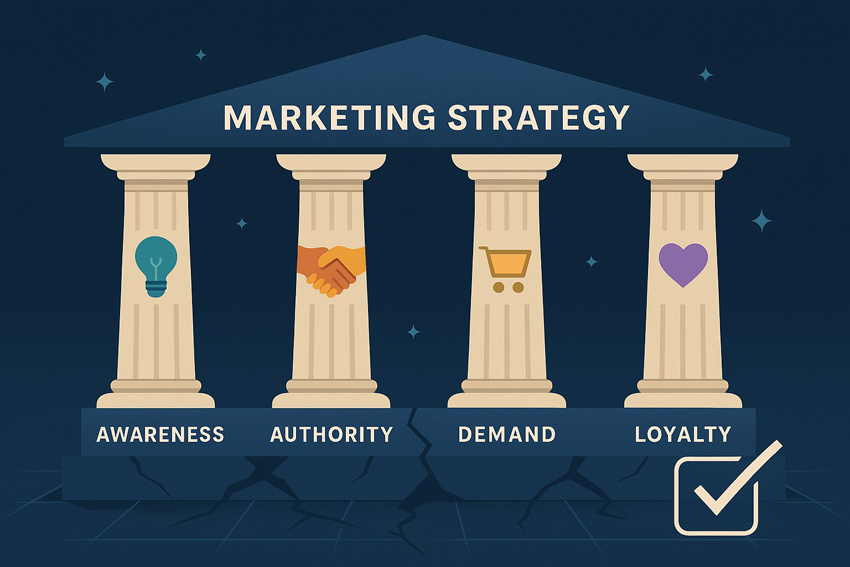Content Marketing: Why every firm needs content pillars in its marketing strategy
Content Marketing: Why every firm needs content pillars in its marketing strategy
By Edie Reinhardt
Marketing a law firm requires more than just having a website and social media presence. To consistently attract the right clients and referral sources, firms need a content strategy built on clear, focused content pillars.
What are content pillars?
Content pillars are the core topics or themes that will be the backbone of the firm’s marketing content. Rather than providing information on a wide range of subjects, the firm concentrates its efforts on pillars chosen because they reflect the firm’s key areas of expertise, strengths, priorities, and target audience’s interests.
While pillars may broadly align with a firm’s practice areas, they do not have to match them. Pillars should be client-centric, addressing client issues, questions, or problems. For example, they might highlight:
- Practice niches (e.g., tax audits)
- Industries served (e.g., manufacturing)
- Types of clients (e.g., start-up companies)
- Location/practice-specific issues (e.g., New York City business regulations)
Once identified, each pillar begins with creating a comprehensive “hub” web page that provides an overview of the main topic. From there, related subtopics are developed, like the spokes of a wheel. Articles, blog posts, client alerts, videos, case studies, and social media updates are created to align with each subtopic, creating a structured approach that showcases the firm’s authority in the subject matter and improves visibility in search results.
Why should lawyers use content pillars?
Using content pillars helps firms market more effectively and efficiently. They:
- Save time on selecting topics for individual pieces of content. Since the main and subtopics have been identified, editorial calendars are easier to fill.
- Maintain focus on priorities. Efforts are concentrated on areas most important to the firm’s business.
- Build credibility and trust. In-depth, high-quality information positions lawyers as knowledgeable and reliable resources.
- Generate leads and referrals. Consistent, targeted messaging keeps the firm top of mind and nurtures prospects at every stage of the buying journey, from general awareness of the firm’s expertise to hiring.
- Boost SEO performance: AI and Google search engines want structured, keyword-rich content that answers searchers’ questions. Using the pillar approach helps search engines identify the firm as an authoritative source, driving more qualified traffic.
- Enhance client education: Well-organized information makes complex topics easier for readers to understand and explore.
What are best practices for using content pillars?
To get the most value out of pillars, firms should take these steps:
- Start with a small number of pillars to avoid getting overwhelmed.
- Create content that answers client questions and incorporates keyword research to improve search engine (SEO) rankings.
- Develop an editorial calendar with assigned authors and deadlines to keep everyone accountable.
- Publish new content consistently.
- Incorporate visuals such as infographics, charts and videos to improve engagement.
- Update pillar and subtopic pages regularly to reflect changes in the law or client needs.
- Link between hub and subpages to guide readers through related topics and keep them on the site for a longer period.
- Promote content using multiple marketing channels and repurpose it into different formats to get the best return on investment.
- Monitor performance metrics to determine what content resonates and adjust accordingly.
By organizing content around pillars, firms can boost their online visibility, demonstrate expertise, educate and engage clients, and ultimately, win more business.

Edie Reinhardt, Esq. is principal of RDT Content Marketing, which specializes in helping attorneys showcase their expertise and target their marketing to attract more clients. She can be reached at [email protected].
Share this story, choose a platform
Brought to you by BridgeTower Media
Free Weekly Newsletter
Recommended content
The Skills Coach: Micro-mindfulness: Simple daily practices for lawyer well-being
The Skills Coach: Micro-mindfulness: Simple daily practices for lawyer well-being By Lori Berman (with Nora Zeigenfuse) I don’t meditate. I’ve [...]
Is ChatGPT the death of legal blogging?
The simple answer is no. But it may be the death of bad legal blogging. Read more @ legalmarketingblog.com
The new frontier of law firm ownership: Private equity
The ownership of American legal firms is fragmented. That makes it an attractive target for private equity investment, despite ethics [...]
Email marketing sequences that work for law firms
Messaging that speaks to a contact’s concerns and interests will be effective at building trust with client-prospects. Read more @ [...]






